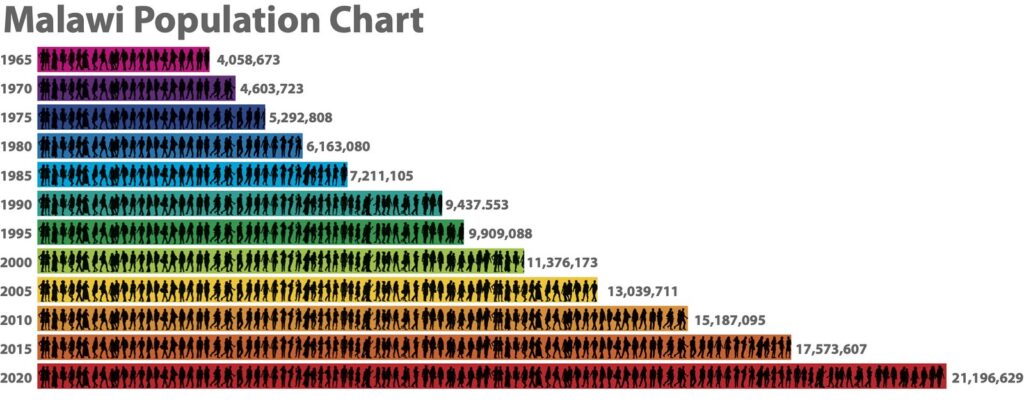
Malawi, Central Africa … To look at the growth chart for the nation of Malawi is similar to looking at a professional boxer on steroids. It just keeps getting bigger and bigger at breakneck speed! Here is what it looks like:
| Year | Population |
| 1965 | 4,058,673 |
| 1970 | 4,603,723 |
| 1975 | 5,292,808 |
| 1980 | 6,163,080 |
| 1985 | 7,211,105 |
| 1990 | 9,437.553 |
| 1995 | 9,909,088 |
| 2000 | 11,376,173 |
| 2005 | 13,039,711 |
| 2010 | 15,187,095 |
| 2015 | 17,573,607 |
| 2020 | 21,196,629 |
Since independence in 1964, the population has registered a whopping 500% increase. By comparison the U.S had a population of 199,744,679 in 1965. If the U.S. had experienced a 500% increase, the population today would be 998,668,395. Instead the current population is 331,042,950 (as of July 7, 2029), well under a 100% increase. Imagine the difficulties that would be apparent if the U.S. were to have a population three times its current size? Part of the result of this population explosion is the fact 66.38% of Malawi’s population is under 24 years of age. (0 – 14 constitute 45.87%, and 15 – 24 add up to a total of 20.51% – World Factbook)
For Malawi, a peaceful haven in a somewhat turbulent sea of nations, the population growth has stretched its public services, especially its healthcare and educational systems, beyond the breaking point. Neither have sufficient buildings, staff, equipment or resources to keep pace with the need. If the nation is to climb out of its deep poverty, and chart a better future, it will require not just enough resources to keep up, but enough to catch up and to move ahead of the curve.
